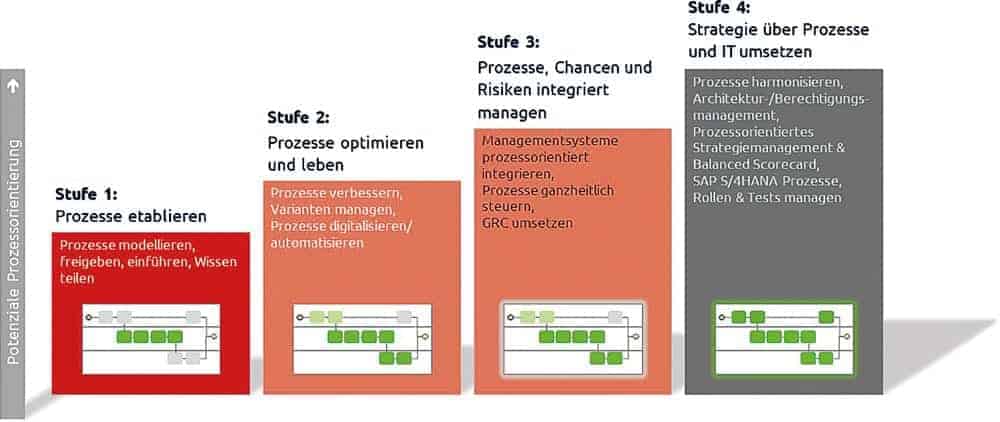Like tree and branch


If you know your processes, have modeled and tested them, you get to know your own company in a whole new way. Is the analogy to a tree, its branches and twigs, an exaggeration? The SAP system with its standard processes would be like a tree.
A flexible BPM (Business Process Management) solution such as the BPM-
Suite of Intellior would be the branches, leaves, flowers, fruits. Perhaps the comparison is exaggerated. Nevertheless, there are differences and similarities in every partnership that complement each other particularly well.
Process orientation is economic customer orientation. You deliver what the customer needs and is willing to pay for. And it goes without saying that you also have to be compliant. Now SolMan comes into play, SAP's organizational talent, a "bouncer" between bark and branches who takes a critical look at the format and content of those entering.
SolMan can be used in many application scenarios because it is very generically structured. And SAP says that process orientation means that processes are naturally mapped and configured as BPMN processes. This is exactly what standard processes are, processes and configurations in SAP are managed with SolMan. First of all, these are the most important SAP activities/functions.

Most of them are needed in the specific case, while others are not. Now the operation of SolMan is complex and not exactly user-friendly. When migrating to S/4, the problem is exacerbated by the fact that the effort involved in brownfield, greenfield or bluefield approaches differs considerably depending on the consultancy.
For many IT managers, an investment in brownfield, for example, is uneconomical and simply too expensive. With such a migration, the expenses of the previously implemented adaptation would have to be repeated. You take on ballast that you don't need. That's why many IT managers say they'll use greenfield for S/4. Here, too, there is a danger of not seeing the forest for the trees if functionality and simplicity do not suit the user group.
This is usually followed by a gap analysis to clarify gaps between the operational target and actual states, which leads to the consideration: What of the reference processes fits the existing customer processes, what can be used, what not. "When Intellior's BPM Suite is in play", says Kai Krings, "you can import, discuss and adjust the reference process and synchronize it back into SAP via the connector."

This means that the colleague in charge of SAP customizing has the same process available one-to-one as the Intellior Suite user. He can also jump to the user portal via the imported links, but he doesn't have to. Instead, he opens it via the SAP process library.
"Above all, he finds his process in the SolMan better" Krings continued.because we give it the layers of the process map and reproduce them in SolMan so that you don't just have a long process list in front of you. We call this intelligent synchronization."The possibilities extend to differentiated configurable releases of the process. The SolMan does not offer all this.
"We can map different industries in the folder structure", says Kai Krings, "such as SAP standard process structures, a complete reference model such as Business Flows from bp-Experts and, of course, the company's own enterprise process model, in which the derived and released processes are versioned and published at the end."
So you have different branches of a tree that each user can access directly with their use cases. In the BPM suite, SAP processes are therefore easier to discuss, model, optimize and implement. If the process runs reasonably stable, the SAP project is usually finished after a go-live and "hypercare". At this point, at the latest, the responsibility for controlling and improving the processes by the process owners begins.





